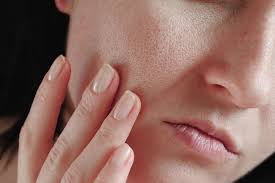Dry skin, clinically known as xerosis, can be more than just a minor nuisance. It is a common condition that many people struggle with, especially during certain times of the year when environmental factors exacerbate the symptoms. In understanding the causes of dry skin, we can begin to address the issue more effectively and implement strategies that restore the skin’s natural balance and moisture.
Understanding Xerosis
Xerosis, the medical term for dry skin, is often marked by itching, flaking, and a rough texture. When your skin loses too much water or oil, it becomes dry and less pliable. This loss of moisture can result in cracks, and when severe, may lead to infections. Clinically, xerosis occurs due to insufficient moisture content in the stratum corneum, the skin’s outermost layer. While common, it’s essential to approach xerosis with a structured skincare regimen that encourages hydration and moisture retention.
Main Symptoms
- Itching: A persistent urge to scratch, which can worsen the condition by causing cracks.
- Scaling: Visible flakes that can be unsightly and itchy.
- Cracks: Fissures in the skin that can become sources for infection if left untreated.
- Redness: Often due to irritation and inflammation caused by excessive dryness.
Environmental Factors
One of the primary contributors to dry skin is the environment. Changes in weather, particularly during winter months, can drastically reduce humidity levels. Cold air typically contains less moisture than warm air, leading skin to lose hydration rapidly. Additionally, indoor heating further strips away humidity, compounding the effects of outdoor conditions.
- Cold Weather: The cool breeze might be refreshing, but it robs your skin of natural moisture.
- Wind Exposure: Constant wind can whisk away moisture from the skin’s surface, leading to chapping and cracking.
- Low Humidity: A common issue in both winter and air-conditioned environments.
Prevention Tips
- Use Humidifiers: These devices can significantly increase indoor moisture levels, counteracting dry environments.
- Wear Protective Clothing: Accessories like scarves and gloves can shield your skin from harsh winds.
- Limit Hot Baths: Opting for lukewarm showers can prevent further loss of skin’s natural oils.
Over-Cleansing Your Skin
While cleanliness is crucial for healthy skin, over-cleansing can strip the skin of its natural oils, essential for maintaining moisture. Many of us opt for vigorous scrubbing with harsh soaps and cleansers, unknowingly causing further dryness.
- Harsh Soaps and Detergents: These can strip oils, leaving skin vulnerable.
- Excessive Washing: Reduces the skin’s oil content, essential for wetness retention.
Better Cleansing Practices
- Select Mild Soaps: Use products designed for sensitive skin, often labeled as “hydrating” or “moisturizing.”
- Avoid Alcohol-based Cleansers: These can be excessively drying.
- Moisturize after Washing: Apply creams or ointments immediately post-bathing to seal moisture in.
The Role of Age
As we age, our skin naturally produces less oil. The sebaceous glands become less active, which leads to a decrease in the skin’s oil production. This decrease impacts adults significantly, turning once hydrated skin into a more arid version of its former self.
- Reduced Sebum Production: Less natural oil means less natural hydration.
- Thinning Skin: Older skin is thinner, leading to less effective barriers against dryness.
Age-Appropriate Care
- Rich Moisturizers: Use creams that replenish oils such as products containing ceramides.
- Hydrating Ingredients: Seek out moisturizers with hyaluronic acid and glycerin which attract moisture.
- Regular Dermatological Check-ups: Professional advice can tailor solutions specific to aging skin needs.
Effects of Smoking on Skin
Smoking is notorious for its adverse effects, not just on internal organs but also externally on the skin. Nicotine narrows blood vessels reducing blood flow to the skin’s outer layers, which significantly depresses nutrients and oxygen available to the skin.
- Decreased Circulation: Compromised nutrient delivery retards skin repair and hydration.
- Collagen Breakdown: Smoking accelerates aging, causing dryness and wrinkles.
Reversing Damage
- Quitting Smoking: The first step towards healing and improved skin health.
- Antioxidant Skincare: Products with Vitamin C and E can help in regenerating damaged skin.
- Nutrient-rich Diet: Incorporating fruits and vegetables that boost circulation and skin health.
Inflammatory Skin Conditions
Conditions such as eczema and psoriasis are chronic issues that lead to significantly dry, itchy skin. These conditions disrupt the skin’s ability to retain moisture and can be exacerbated by environmental factors in addition to their inherent challenges.
- Eczema: A condition characterized by inflamed, itchy patches of skin.
- Psoriasis: Causes skin cells to multiply rapidly, leading to scales and dry patches.
Managing Inflammatory Conditions
- Proper Medication: Consult with healthcare professionals for appropriate topical or systemic treatments.
- Consistent Moisturizing: Emollients can soothe irritation and protect the skin barrier.
- Allergen Avoidance: Identifying and avoiding triggers can reduce flare-ups.
Comprehensive Solutions
Finding the right solution requires understanding the root cause, and sometimes adopting a multifaceted approach. Combining lifestyle changes with the right products is key to combating dry skin effectively.
Skincare Regimen Recommendations
- Daily Moisturizing: Consistency is crucial. Apply moisturizer right after the shower and before bedtime.
- Regular Exfoliation: Use gentle exfoliators to remove dry, dead skin layers, allowing moisture to penetrate better.
- Hydration: Staying hydrated supports skin health, so drink plenty of water daily.
- Dietary Adjustments: Include omega-3 and omega-6 fatty acids found in fish and nuts for skin regeneration support.
- Protective Measures: Sunscreen is essential to protect from harsh UV rays that exacerbate dryness.
- Visit a Dermatologist: Professional insight can guide personalized routines that align with specific skin types and needs.
In conclusion, while dry skin is a common experience, understanding its varied causes empowers individuals to adopt measures that can ameliorate the condition. By implementing mindful skincare practices, considering environmental shifts, and seeking expert guidance when necessary, achieving comfortable, hydrated skin becomes an attainable goal. For those seeking more in-depth strategies and product recommendations, visiting HealthFunda.net provides a comprehensive reservoir of knowledge aimed at achieving optimal skin health.


